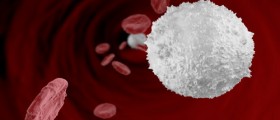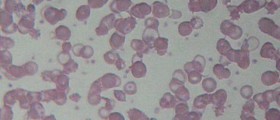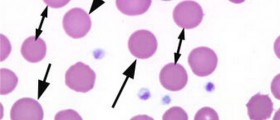
Red blood cells together with white blood cells and platelets represent three essential types of blood cells. Each of these types performs a specific function. Red blood cells are in charge of transport of oxygen to the entire body and each cell and elimination of carbon dioxide (its transmission to the lungs where it is eliminated with the process of respiration). There is a specific range of a red blood cells number in the body. Any change, no matter if the number of red blood cells is lower or higher than the defined limit, is considered pathological and requires further investigation.
Red Blood Cells and the Color of the Blood
Red blood cells are of vital importance for human body. They contain hemoglobin, a mettaloprotein that is made of iron. This substance gives red blood cells intensive red color and is actually responsible for the color of the blood. Apart from being responsible for the color of these blood cells as well as the blood, hemoglobin plays a major role in transfer of oxygen and carbon dioxide. Namely, it binds these gases and if there is an insufficient amount of hemoglobin in the body the supply of oxygen and elimination of carbon dioxide suffers.
Features and Production of Red Blood Cells
Red blood cells are of approximately 6-8 microns in diameter and they are 1.5-1.9 microns thick. The body produces around 200 billion red blood cells per day. They are released in the blood and live between 120 and 125 days. After that period of time the body tears the old red blood cells down. The number of red blood cells varies a lot. Namely, the number of red blood cells between genders differs and there is a definitive difference between the number of red blood cells in children and adults.
Red blood cells are produced in the bone marrow. The actual process of their production is medically known as erythropoiesis. They leave the bone marrow in not entirely mature form called reticulocytes. These blood cells account for approximately 1% of all blood cells. Red blood cells finally become mature in the very blood.
Why is Red Blood Cell Count Important?
These blood cells are markers of certain medical conditions. If there is an insufficient number of red blood cells the person is suffering from anemia. There are different types of anemia and once the low number of red blood cells is confirmed a patient undergoes series of examinations and tests. This way the underlying cause of anemia is determined. Even if there is an increased number of red blood cells there is a reason for a doctor to worry. Until the potential conditions are excluded, excess of red blood cells is considered pathological.
















Your thoughts on this
Loading...